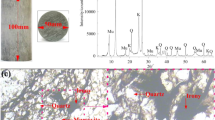Abstract
Viscoplastic constitutive equations offer improved prediction of the accumulated permanent deformation in comparison with linear elastic or viscoelastic models. An elastic-viscoplastic continuum model is proposed to simulate the permanent deformation of an asphalt mixture at WesTrack. After analysis of vertical compressive stress under the same loading condition and layer thickness at a WesTrack replacement section, strain rates were determined to characterize asphalt mixtures subjected to loading at a represent ative vehicle speed. Uniaxial compressive strength tests were conducted at seven different strain rates to obtain the material parameters of elastic-viscoplastic constitutive model. In addition, triaxial compressive strength tests were performed at a low strain rate and four different confinement pressures to obtain material parameters for the Drucker-Prager yield function. The test temperature was 60°C based on the critical temperature for permanent deformation at the field section. The developed model and its calculated parameters were used in finite element simulation of the Simple Shear Tests at Constant Height (SST-CH) and results were compared to experimental measurements at 60°C. Reasonable agreement was found between predicted results and the experimental SST-CH measurements indicating the validity of the model and its parameters.
Similar content being viewed by others
References
Chen, W.F. and Han, D.J. (1988).Plasticity for Structural Engineers, Springer-Verlag New York Inc., New York, USA.
Chen, W.F. and Mizno, E. (1990).Nonlinear Analysis in Soil Mechanics, Elsevier Science Publishing Company Inc., New York, New York, USA.
Christensen, Donald W. and Bonaquist, R. (2002). “Use of strength tests for evaluating the rut resistance of asphalt concrete.”Journal of the Association of Asphalt Paving Technologists, Vol. 71, pp. 692–711.
Desai, C.S. and Zhang, D. (1986). “Viscoplastic model for geologic materials with generalized flow rule.”Int. J. for Num. & Anal. Methods in Geomechanics, Vol. 11, pp. 603–620.
Epps, A., Ahmed, T., Little, D., and Hugo, F. (2000).performance Prediction with the MMLS3 at WesTrack, Research Report 2134-1, Texas Transportation Institute, College Station, Texas, USA.
Huang, B., Mohammad, L., and Wathugala, W. (2002). “Development of a thermo-viscoplastic constitutive model for HMA mixtures.”Journal of the Association of Asphalt Paving Technologists, Vol. 71, pp. 594–618.
Huang, Y.H. (1993).Pavement Analysis and Design, Prentice-Hall, Englewood Cliffs, New Jersey, USA.
Loret, B. and Prevost, Jean H. (1986). “Accurate numerical solutions for drucker-prager elastic-plastic models.”Computer Methods in Applied Mechanics and Engineering, Vol. 54, pp. 259–277.
Lu, Y. and Wright, P.J. (1998). “Numerical approach of visco-elastoplastic analysis for asphalt mixtures.”Computers and Structures, Vol. 69, pp. 139–147.
Park, D.W. (2004).Characterization of Permanent Deformation in Asphalt Concrete Using a Laboratory Prediction Method and an Elastic-Viscoplastic Model, Ph.D. Dissertation, Texas A&M University, College Station, Texas, USA.
Perzyna, P. (1966). “Fundamental problems in viscoplasticity.”Advances in Applied Mechanics, Vol. 9, pp. 243–377.
Seibi, A.C., Sharma, M.G., Ali, G.A., and Kenis, W.J. (2001). “Constitutive relations for asphalt concrete under high rates of loading.”Trans. Res. Rec. 1767, Transportation Research Board, 2001, pp. 111–119.
Tan, W.A., Low, B.H., and Fwa, T.F. (1994). “Behavior of asphalt concrete mixtures in triaxial compression.”Journal of Testing and Evaluation, Vol. 22, No. 3, pp. 195–203.
Author information
Authors and Affiliations
Corresponding author
Rights and permissions
About this article
Cite this article
Park, D.W., Martin, A.E., Lee, H.S. et al. Characterization of permanent deformation of an asphalt mixture using a mechanistic approach. KSCE Int. J Civ Eng 9, 213–218 (2005). https://doi.org/10.1007/BF02829052
Received:
Accepted:
Issue Date:
DOI: https://doi.org/10.1007/BF02829052




